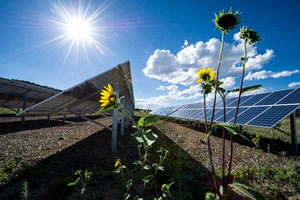Snapping the Sun: 5 Tips for Capturing Compelling Solar Power Photos
 Department of Energy: This week, the Energy Department’s SunShot Initiative launched its “Hit Me with Your SunShot” photo contest. It encourages photographers, both professional and amateur, to submit their shots of solar energy in eight different categories, ranging from rooftop installations to power electronics to concentrating solar power. My fellow judge, Dennis Schroeder, a photographer at the National Renewable Energy Laboratory, and I compiled a list of pointers that may be helpful if you’re looking to submit a brand new shot for the contest. Regardless of whether you’re a photography newbie or a seasoned pro, here are five pointers before you shoot:
Department of Energy: This week, the Energy Department’s SunShot Initiative launched its “Hit Me with Your SunShot” photo contest. It encourages photographers, both professional and amateur, to submit their shots of solar energy in eight different categories, ranging from rooftop installations to power electronics to concentrating solar power. My fellow judge, Dennis Schroeder, a photographer at the National Renewable Energy Laboratory, and I compiled a list of pointers that may be helpful if you’re looking to submit a brand new shot for the contest. Regardless of whether you’re a photography newbie or a seasoned pro, here are five pointers before you shoot:
1. Keep it natural. Natural light is usually best so you’re already working at an advantage with your subject matter, given that most solar equipment is outdoors. However, the weather and the time of day can play a big role in how your photos look. . Generally speaking, morning and evening sunlight can greatly enhance an image, but try experimenting with mid-afternoon light. It could lead to some interesting solar images! Full Article:
Comments (0)
This post does not have any comments. Be the first to leave a comment below.
Featured Product

